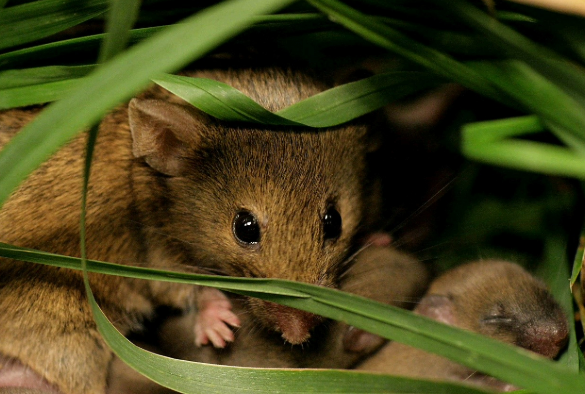Researchers have further advanced understanding of social relationships in female mammals, highlighting the critical role oxytocin plays.
Newly published research studied communal breeding in house mice and found that higher oxytocin in sisters led to a higher reproductive success and better teamwork. This latest work furthers understanding of social behaviour, particularly in female mammals.
Female house mice raise their offspring either alone or together with another female in a communal nest. Although partners are very often related, conflict over the amount of care for the communal litter is high and can lead to biases in maternal investments or reproductive success. This study aimed to describe the role of oxytocin in determining cooperation between sisters and assess if oxytocin concentrations are related to the presence of out-group competitors or limited nest sites for breeding.
Professor Paula Stockley, Mammalian Behaviour & Evolution Group, Institute of Infection, Veterinary and Ecological Sciences, University of Liverpool said: “Our research addresses the challenge to better understand social relationships between related individuals. Although such relationships are fundamental to understanding animal sociality, we still lack a clear understanding of the underlying mechanisms as well as the environmental factors determining social behaviour, particularly in female mammals. Oxytocin has been shown to regulate social behaviours in several species but whether oxytocin is also involved in regulating the outcome of communal breeding has to be determined. This latest research is another step closer in finding this out.”
In collaboration with Dr Stefan Fischer, University of Vienna, the study also found that as well as higher reproductive success and better teamwork, sisters with higher oxytocin levels had lower reproductive skew. Dr Fischer adds: “Higher oxytocin did not lead to a higher reproductive success when females raised their offspring alone. Surprisingly, we did not find any influence of outgroup competition or the availability of nest sites on oxytocin concentrations.
“By linking fitness consequences of cooperation with oxytocin, our findings have broad implications for understanding the evolution of egalitarian social relationships. Our study highlights the role of oxytocin in regulating cooperation and conflict in social systems providing broad insight into social system diversity. It also offers potential new insights for understanding both the proximate basis of cooperative behaviour and the evolution of diverse social systems.
“More work is now needed to see if our findings are replicated in other social species where individuals cooperate to raise their offspring.”
The paper, ‘Egalitarian cooperation linked to central oxytocin levels in communal breeding house mice’ was published in Communications Biology. (DOI: https://doi.org/10.1038/s42003-024-06922-y)
A female house mouse caring for her litter. Photo: Mike Thom
